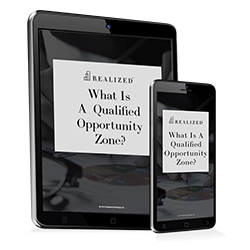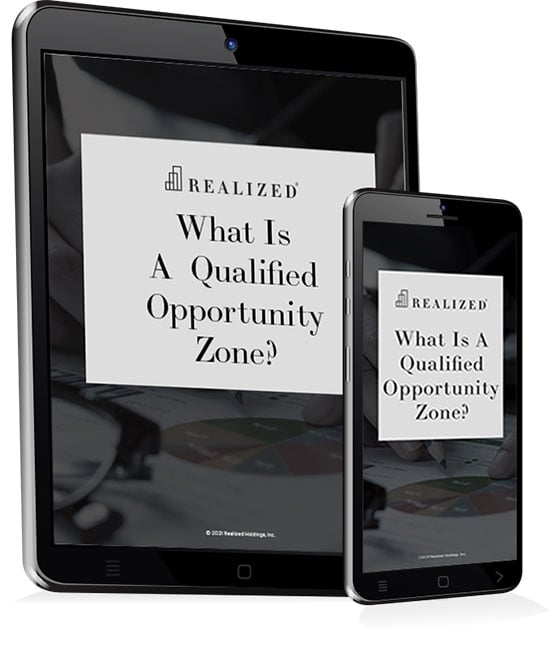
The key for real estate developers, fund sponsors and investors is to familiarize themselves with the Qualified Opportunity Zone Program (“OZP”) early so they can take advantage of its benefits when planning new projects. From a sponsor perspective, it is essential to ensure that their QOF is structured properly to allow investors making an investment to receive the full potential tax benefits of the QOZ program. Based upon the statute, various published articles1, and our participation in the Novogradac Opportunity Zone Working Group (a network of real estate professionals, lawyers and investors that work together to lobby solutions for incentive issues within the opportunity zone space), here are some high-level basics:
Qualified Opportunity Fund Requirements
A QOF is an investment vehicle organized for the purpose of investing at least 90 percent of its assets in Qualified Opportunity Zone Property (“QOZP”), which does not include interests in another QOF. Substantially all of the tangible property owned directly or indirectly by the QOF must meet the following high-level requirements:
- Acquired by purchase after Dec. 31, 2017, from an unrelated party
- "Substantially all" of the use of such property is in a QOZ during substantially all of the QOF holding period
13 Things to Know as an Aspiring QOF Sponsor
1. Capital Commitments and Contribution of Funds. Investors will be able to enjoy the tax benefits only if they:
- Make the QOF investment 180 or fewer days after they realize gains from a recent sale or exchange to or with an unrelated party.
- Invest either a partial or the entire amount of their capital gain in the QOF within 180 days after said sale or exchange — even if the QOF does not invest that capital until a later date.
2. Certification. No pre-approval or action by the IRS is required. To qualify as a QOF, the applicable entity will need to complete a self-certification form (which was released by the IRS in the summer of 2018) and attach that form to the entity’s U.S. federal income tax return for the taxable year.2
3. Defaults. A QOF failing to maintain its qualification as a QOF is a hazard for Investors. Accordingly, investors may want the ability to redeem their interests in the event of failure, or likely failure, as a condition to invest in a QOF. Other possible investor considerations: failure to meet/maintain the QOF requirements could result in a removal event of the general partner (with the potential to be replaced), to be indemnified or otherwise made whole with respect to the monthly penalty for failure to meet the 90-Percent Test (because investors will bear their proportionate share of any penalty), etc.
4. Entity Type. Each QOF needs to be organized as a corporation or as a partnership.
5. Fees and Promote. Nothing limits the manner in which the sponsor of a QOF may charge fees to the investors for services rendered or prevents the sponsor or an affiliate from taking a promote (or carried interest) from the QOF).
6. Investment Limitations. Property owned directly or indirectly by a QOF generally must:
- Be placed into service in an QOZ for the first time by the QOF (or a QOZ Business), or;
- Be substantially improved by the QOF (or QOZ business) within a 30-month period, in order for the QOF to satisfy the 90-Percent Test.
There are no limits or requirements on the number of Properties (QOZ Properties) a QOF may own, any maximum or minimum limits on the amount of contributions to a QOF, or on the number of investors in a QOF.
7. Leverage. The Act does not prohibit the acquisition of QOZP with financing. Lenders to QOFs, however, are not eligible for Opportunity Zone Program tax benefits available to equity investors.
8. Purpose. The organizational documents of the QOF should clearly state that its purpose is to invest in QOZP. QOFs have the latitude to select a narrow focus (specific asset or area) or broad focus (across QOZ’s and asset classes).
9. Reporting. It is reasonable for Investors to expect reporting to show that the QOF and its investments meet the relevant tax requirements for QOFs and that the QOF is able to demonstrate compliance with any tax audit.
10. Sales and Dispositions by a QOF. This area still needs some significant clarity from the regulators including, but not limited to:
- While a QOF does not need to hold any specific asset for any period of time, there are potential tax issues raised by the QOF’s sale of assets (including interests in QOZ Businesses).
- While the Tax Cut and Jobs Act of 2017 (“the Act”) requires Treasury to give guidance on how long a QOF can hold cash from the sale of an investment before it needs to reinvest the proceeds, the Act does not directly address Treasury’s authority to provide a grace period and/or start-up period during which the QOF is not required to count cash dedicated or reserved for investment in qualified opportunity zone property as a “bad asset”.
- Similarly, for QOFs that want to sell assets, Treasury has not defined the “reasonable period of time” that QOFs will have to reinvest cash (which generally is a “bad asset”) received from the sale or disposition of QOZP without jeopardizing their ability to meet the 90-Percent Test.
Sponsors and investors need to exercise a great deal of caution with respect to sales and dispositions by a QOF if they are moving forward before further regulatory guidance.
11. Term. Investors in QOFs realize the tax benefits associated with the QOF based on the length of time their investment in the QOF is to be held. In order to attract investors, a sponsor should make the term of a QOF long enough for investors to receive the benefits of the tax deferral and the FMV Basis Election, which is the ability to take a step-up in basis on the appreciated investment in the fund when it is liquidated, resulting in no tax liability upon sale (which becomes available after the 10th anniversary of the QOF investment). Alternatively, the QOF could structure itself to allow redemptions and transfers of interests by investors, which would allow investors to exit the QOF at any time, subject to the conditions in the operating agreement.
12. Timing. It appears that a QOF can acquire qualified assets first and then bring in investors at a later time. While it is evident investors need to invest their gains in a QOF within 180 days of realizing the gain (on or before December 31, 2026), there is no clear guidance on how soon after receiving investor’s funds the QOF needs to invest in QOZP. A key challenge in setting up QOFs will be matching qualifying investments with investors within the prescribed timeframes.
13. U.S. Securities Laws. Interests in a QOF will be considered securities.
Many Questions Still Remain
The Act laid the groundwork for this new program and set out the basic parameters. So far, the process of designating QOZs is substantially complete and the IRS issued taxpayer-favorable guidance enabling QOFs to self-certify. However, certain details regarding the administration of the program remain unclear and questions remain about how the law will operate in practice. Consequently, sponsors and developers need to be careful when structuring QOF’s and transactions, particularly if they precede regulatory guidance.
As John Lettieri of the Economic Innovation Group reminds us, “ The fundamental purpose of Opportunity Zones is to encourage long-term equity investments in struggling communities.”3 At Realized, our focus is Tax-Optimized Real Estate®. With 60 years of collective experience and $5.0 billion of historical real estate transactions behind the members of the Realized team, we advise and consult investors, sponsors, and developers through the complexities of Tax-Optimized Real Estate® transactions. Our goal is to activate a conversation that will bring greater clarity and ultimately increased viability to this promising program.
- Information gleaned from various articles including “Opportunity Zones: A Preliminary Examination, Shearman & Sterling, “Opportunity Knocks under Tax Reform”, KPMG, “Qualified opportunity funds provide new tax incentives for investors”, PWC, and various others
- Retrieved from https://www.irs.gov/newsroom/opportunity-zones-frequently-asked-questions
- John Lettieri. “The Promise of Opportunity Zones.” Testimony before the Joint Economic Committee of the United States Congress. May 17, 2018.



